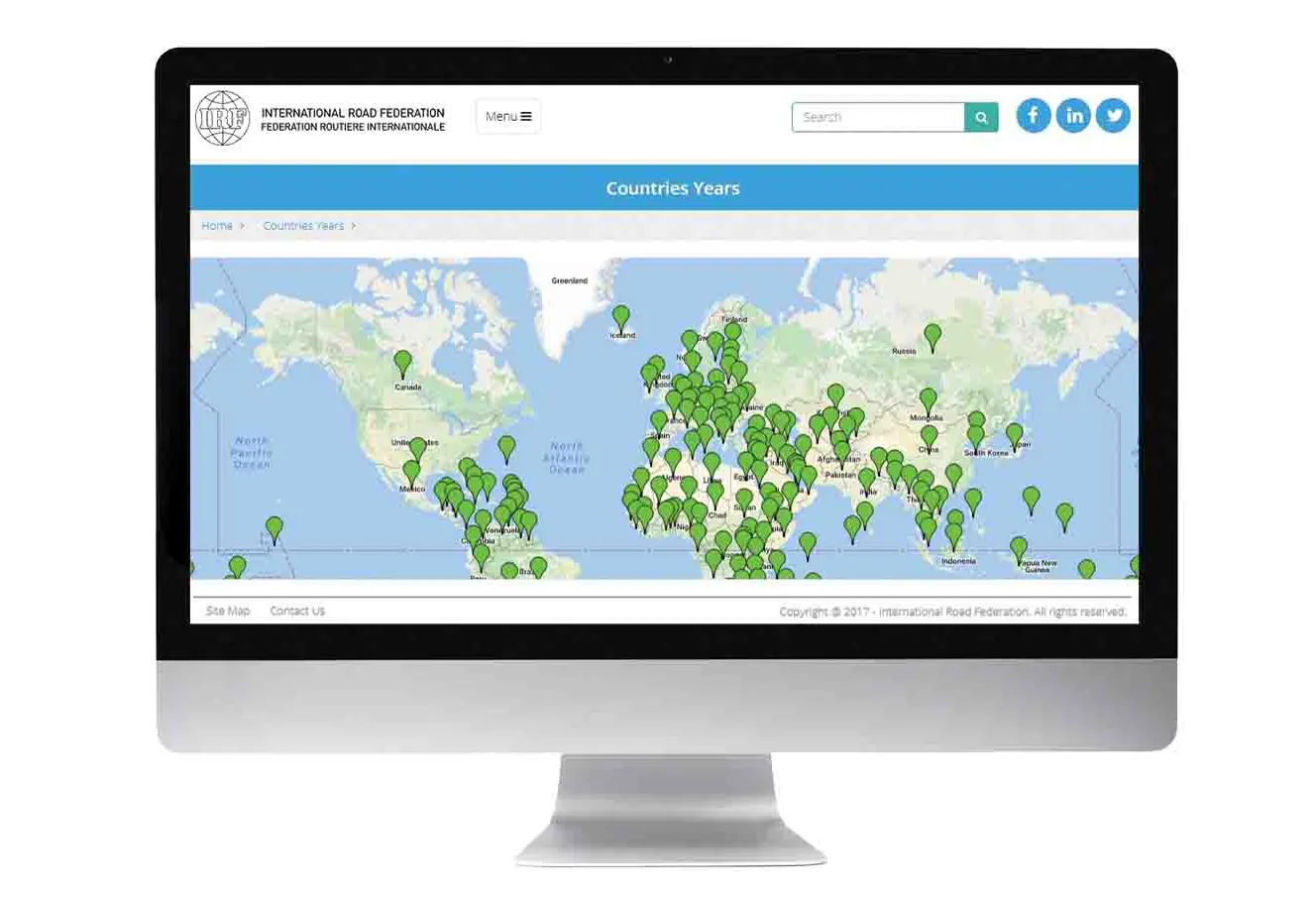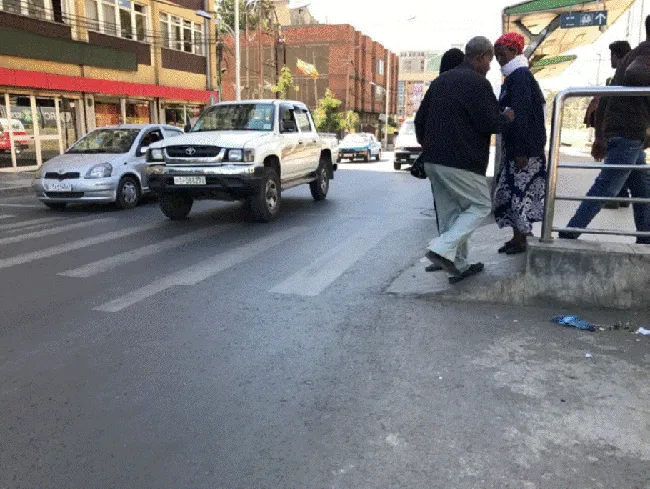The European Road Federation will soon go on the road to promote greater work zone safety
“As previous European projects (e.g. ARROWS) have already made proposals for the design of work zones at EU level, it was essential to avoid duplication and find an angle that would provide true added value”
The European Commission has just unveiled the road safety statistics for 2014, which point to an overall slowdown in the momentum for casualty reduction achieved over the past few years. While the annual red
May 14, 2015
Read time: 4 mins
The 1202 European Road Federation will soon go on the road to promote greater work zone safety
“As previous European projects (e.g. ARROWS) have already made proposals for the design of work zones at3287 EU level, it was essential to avoid duplication and find an angle that would provide true added value”
The2465 European Commission has just unveiled the road safety statistics for 2014, which point to an overall slowdown in the momentum for casualty reduction achieved over the past few years. While the annual reduction in deaths between 2010-13 had averaged 5%, the figures for 2014 show a decrease of just 1% compared to 2013.
While road work zone fatalities represent only a small percentage of overall figures, the truth is that working to maintain roads remains one of the most dangerous jobs in road construction. In this sense, apart from the moral responsibility to protect workers in road work zones, improving the safety of work zones could proportionally deliver significant results.
Given first, that Europe’s road infrastructure is ageing and second, that traffic volumes tend to increase over the medium-to-long-term, the frequency of road works in the near future will increase, if EU member states are to maintain this important asset in a trustworthy condition.
Recognising the importance of increasing the safety of workers in work zones, the European Parliament called on the European Commission in 2011 to ensure that “roadwork sites are made safer through guidelines for designing and equipping sites, which should be standardised, as far as possible, at the European level, so that motorists are not faced with new, unfamiliar circumstances in each country”.
In response to this call, the ERF set up a working group to examine how work zones can be made safer. As previous European projects (e.g. ARROWS) have already made proposals for the design of work zones at EU level, it was essential to avoid duplication and find an angle that would provide true added value. Following a comprehensive review of previous and ongoing initiatives, the group decided to focus on developing a set of recommendations for infrastructure equipment on the TEN-T.
To arrive at these recommendations, the following methodology was pursued:
• First of all, practices in member states and the equipment used in European countries were collected and examined.
• Secondly, the most commonly used equipment was analysed from which types of functionality were derived, primarily information, guidance and protection.
• Third, a risk assessment was carried out by experts to verify whether the functionalities effectively contributed to safety objectives.
• Finally, the Work Zone Safety Project could set minimum performance levels for the equipment to enable them to be effective in their own objectives regarding functionality and safety.
“These guidelines represent the collective efforts of our group over the past three years,” said John Kreps, chairman of the WG Work Zone Safety at the ERF. “In total, we collected the national work zone safety guidelines of 16 EU member states and performed an in-depth analysis to assess how different road safety equipment can be best deployed to increase safety in a cost-effective manner.”
In addition to the overall recommendations, the position paper contains three practical examples from France, Spain and Belgium of how road infrastructure elements are deployed in three types of work zones - mobile, short- and long-term - and areas - approach, activity and termination.
“We hope that this position paper will raise awareness of the importance of improving safety in work zones both at EU and member state level,” said Christophe Nicodème, ERF director general.
“At a time when the European Commission is revising Directive 2008/96 on Infrastructure Safety Management, we believe that our report can make a positive contribution and result in a more coordinated approach on this topic, while at the same, respect the principle of subsidiarity.”
The next step of the working group will be to organise a series of workshops in Europe on work zone safety in order to raise awareness amongst authorities and experts of the need for a more comprehensive approach to this topic.
To get a copy of the position paper “Towards Safer Work Zones”, please %$Linker:2 External <?xml version="1.0" encoding="utf-16"?><dictionary /> 0 0 0 oLinkExternal click here Visit ERF Towards Safer Work Zones document false http://www.erf.be/images/Towards_Safer_Work_Zones_EN_FINAL.pdf false false %>. Or contact José Diez at %$Linker: 2 Email <?xml version="1.0" encoding="utf-16"?><dictionary /> 0 0 0 oLinkEmail [email protected] email [email protected] false mailto:[email protected] true false %>
“As previous European projects (e.g. ARROWS) have already made proposals for the design of work zones at
The
While road work zone fatalities represent only a small percentage of overall figures, the truth is that working to maintain roads remains one of the most dangerous jobs in road construction. In this sense, apart from the moral responsibility to protect workers in road work zones, improving the safety of work zones could proportionally deliver significant results.
Given first, that Europe’s road infrastructure is ageing and second, that traffic volumes tend to increase over the medium-to-long-term, the frequency of road works in the near future will increase, if EU member states are to maintain this important asset in a trustworthy condition.
Recognising the importance of increasing the safety of workers in work zones, the European Parliament called on the European Commission in 2011 to ensure that “roadwork sites are made safer through guidelines for designing and equipping sites, which should be standardised, as far as possible, at the European level, so that motorists are not faced with new, unfamiliar circumstances in each country”.
In response to this call, the ERF set up a working group to examine how work zones can be made safer. As previous European projects (e.g. ARROWS) have already made proposals for the design of work zones at EU level, it was essential to avoid duplication and find an angle that would provide true added value. Following a comprehensive review of previous and ongoing initiatives, the group decided to focus on developing a set of recommendations for infrastructure equipment on the TEN-T.
To arrive at these recommendations, the following methodology was pursued:
• First of all, practices in member states and the equipment used in European countries were collected and examined.
• Secondly, the most commonly used equipment was analysed from which types of functionality were derived, primarily information, guidance and protection.
• Third, a risk assessment was carried out by experts to verify whether the functionalities effectively contributed to safety objectives.
• Finally, the Work Zone Safety Project could set minimum performance levels for the equipment to enable them to be effective in their own objectives regarding functionality and safety.
“These guidelines represent the collective efforts of our group over the past three years,” said John Kreps, chairman of the WG Work Zone Safety at the ERF. “In total, we collected the national work zone safety guidelines of 16 EU member states and performed an in-depth analysis to assess how different road safety equipment can be best deployed to increase safety in a cost-effective manner.”
In addition to the overall recommendations, the position paper contains three practical examples from France, Spain and Belgium of how road infrastructure elements are deployed in three types of work zones - mobile, short- and long-term - and areas - approach, activity and termination.
“We hope that this position paper will raise awareness of the importance of improving safety in work zones both at EU and member state level,” said Christophe Nicodème, ERF director general.
“At a time when the European Commission is revising Directive 2008/96 on Infrastructure Safety Management, we believe that our report can make a positive contribution and result in a more coordinated approach on this topic, while at the same, respect the principle of subsidiarity.”
The next step of the working group will be to organise a series of workshops in Europe on work zone safety in order to raise awareness amongst authorities and experts of the need for a more comprehensive approach to this topic.
To get a copy of the position paper “Towards Safer Work Zones”, please %$Linker:








